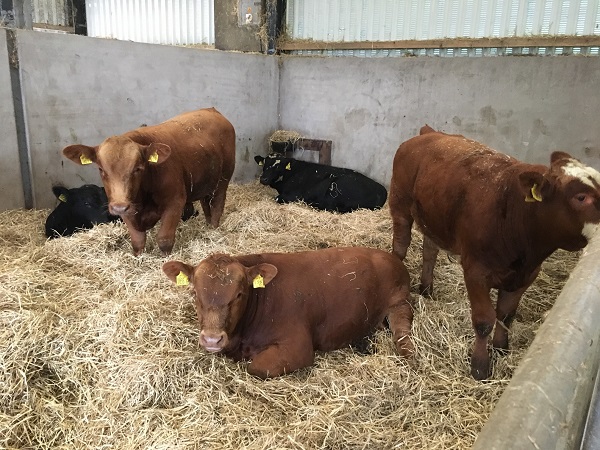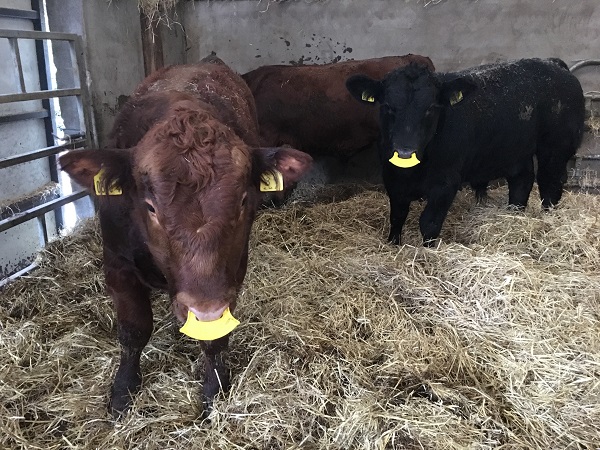Preparing for Weaning at the CAFRE Farms
November 7, 2019
It is essential that suckler farmers plan their weaning strategies to avoid any delays or potential problems in the herd. Weaning can be a stressful period on young suckler calves as they experience new social environments, loss of maternal contact, a change in diet, and in most cases new housing.

2019 Stabiliser weanling bulls in a straw bedded pen at the CAFRE Beef and Sheep Centre.
It is good practice to feed concentrates to calves prior to and after weaning in order to reduce the level of stress linked with weaning. The concentrates should only contain high quality ingredients with a crude protein content of 15-16%. High quality forage should also be fed at this stage. It is essential when calves are housed at weaning that the house is clean, well ventilated and draught free with plenty of bedding material provided. Dusty environments should be avoided. It is recommended to avoid mixing groups of calves at weaning in order to reduce the risk of disease spread especially if they are originating from different sources.

QuietWean nose flaps in 2019 spring born calves at CAFRE’s Beef and Sheep Centre.
A disease outbreak during the weaning period can have a major impact on the economic viability of the cattle enterprise, due to the direct costs of treatment and calf losses and the long term effect on lifetime performance. A strict pneumonia and clostridial disease vaccination protocol is an important part of every herd health plan.
It is important to remember that the full response to a particular vaccine does not occur for approximately 14 days after administration of the initial course. It therefore is essential for vaccinations to be completed well in advance of weaning. Prior to weaning ensure all calves are treated for internal and external parasites, especially lung worm. Calves with damaged lungs are more susceptible to pneumonia at weaning time.
At CAFRE’S Beef and Sheep Farm Centre and Hill Farm Centre the aim is to wean all calves using the QuietWean device. This weaning method involves a two stage process as follows:
Stage 1 – Calves are prevented from suckling their dam for a period of 4 to 7 days using a specially designed nose flap;
Stage 2 – Separation process.
The lightweight plastic non-invasive nose-flap is attached to the calf’s nose. This prevents the calf from suckling while allowing the calf to feed and have social and physical contact with its mother effectively reducing the bond between the mother and calf in a less stressful environment. After the calf has worn the anti-sucking device for the recommended period the nose flap is removed and the calves are separated from their mothers. Research using the QuietWean tags indicated that calves remaining with the cow experienced less stress than calves prevented from suckling and separated simultaneously. Studies have also found that the use of the nose flap in calves at weaning can improve subsequent year heifer reproductive performance without affecting steer carcass quality.
In concluding use the system that works best on your farm, ensuring that stress is kept to a minimum in both cows and calves to maximise animal performance and minimise the level of illness on farm.
